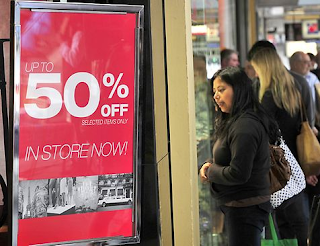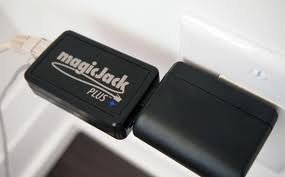Consumer Confidence Drops to 5-Month Low
 After falling precipitously in May, Consumer Confidence fell even further this month, to a 5-month low. The Conference Board’s Consumer Confidence Index declined to 62.0 in June, against economists’ expectations for a monthly reading of 63.5 based on Bloomberg’s survey. The index marked even lower ground than May’s dive to 64.4, revised down from 64.9 at its initial reporting. The reasons should be clear, as economic data points have trended poorly and European issues have raised question about impact to our economy, the financial system and the value of stocks. This strikes Americans where it hurts, their retirement savings accounts. The SPDR S&P 500 (NYSE: SPY) was essentially unchanged on the news, while the more closely tied Consumer Discretionary Select Sector SPDR (NYSE: XLY) was surprisingly higher by more than a half point Tuesday morning. Though the SPDR S&P Retail (NYSE: XRT) was moving lower, as would be expected.
After falling precipitously in May, Consumer Confidence fell even further this month, to a 5-month low. The Conference Board’s Consumer Confidence Index declined to 62.0 in June, against economists’ expectations for a monthly reading of 63.5 based on Bloomberg’s survey. The index marked even lower ground than May’s dive to 64.4, revised down from 64.9 at its initial reporting. The reasons should be clear, as economic data points have trended poorly and European issues have raised question about impact to our economy, the financial system and the value of stocks. This strikes Americans where it hurts, their retirement savings accounts. The SPDR S&P 500 (NYSE: SPY) was essentially unchanged on the news, while the more closely tied Consumer Discretionary Select Sector SPDR (NYSE: XLY) was surprisingly higher by more than a half point Tuesday morning. Though the SPDR S&P Retail (NYSE: XRT) was moving lower, as would be expected.
 Our founder earned clients a 23% average annual return over five years as a stock analyst on Wall Street. "The Greek" has written for institutional newsletters, Businessweek, Real Money, Seeking Alpha and others, while also appearing across TV and radio. While writing for Wall Street Greek, Mr. Kaminis presciently warned of the financial crisis.
Our founder earned clients a 23% average annual return over five years as a stock analyst on Wall Street. "The Greek" has written for institutional newsletters, Businessweek, Real Money, Seeking Alpha and others, while also appearing across TV and radio. While writing for Wall Street Greek, Mr. Kaminis presciently warned of the financial crisis.
Consumer Confidence
Lower confidence has not yet reflected perfectly through to actual consumer spending, though recent retail trade data has been softer. The reason is probably better understood via study of the component measures of the confidence tally. The consumer view of the present situation actually increased in June while expectations for the future declined. The Present Situation Index gained to 46.6 in June, up from 44.9 last month. The Expectations Index, which varies more wildly driven by fear and greed, dropped to 72.3 this month, from 77.3 in May. The absolute value of the index as compared to the Present Situation measure says something about the optimism of Americans with regard to money making hope, while also reflecting their close following of global financial market news.
Yet, it’s not just intangibles that are affecting the views of those surveyed. The latest employment data has been less than enthusing; in fact, most domestic economic data points seem to me to be trending poorly. The question is: will consumers pull back their spending in a more significant manner? Lynn Franco, Director of Economic Indicators at the Conference Board, had something to say about that today:
"Consumer Confidence declined in June, the fourth consecutive moderate decline. Consumers were somewhat more positive about current conditions, but slightly more pessimistic about the short-term outlook. Income expectations, which had improved last month, declined in June. If this trend continues, spending may be restrained in the short-term. The improvement in the Present Situation Index, coupled with a moderate softening in consumer expectations, suggests there will be little change in the pace of economic activity in the near-term."
If you look at the details of the monthly data, the absolute values have continued to reflect a terribly poor situation, while the changes month-to-month are highlighted by the popular press as either great or disastrous news.
- 14.9% of consumers say business conditions are good
- 35.1% say business conditions are bad
- 41.5% say jobs are hard to get
- 7.8% say jobs are plentiful
- 15.5% expect business conditions to improve over the coming six months
- 16.2% expect business conditions to worsen
- 14.1% see more jobs ahead
- 20.6% see fewer jobs
- 14.8% expect their income to increase
The component survey results show a clearly pessimistic feeling about the current situation, which reflects poorly for the economy and consumer spending, in that it could be much better. Certain retailers have benefited and should continue to benefit from such an environment, including especially Dollar Tree (Nasdaq: DLTR), Amazon.com (Nasdaq: AMZN), eBay (Nasdaq: EBAY), Costco (Nasdaq: COST) and Wal-Mart (NYSE: WMT). As far as stock recommendations go, I favor DLTR over the rest for reasons discussed within this report. Keep receiving articles like these by following me at the blog and via email. Thank you.
Article interests investors in: S&P Retail ETF (NYSE: XRT), Wal-Mart (NYSE: WMT), Pier 1 Imports (NYSE: PIR), Ethan Allen (NYSE: ETH), Hooker Furniture (Nasdaq: HOFT), Home Depot (NYSE: HD), Lowes (NYSE: LOW), Apple (Nasdaq: AAPL), Best Buy (NYSE: BBY), The Limited (NYSE: LTD), Chicos (NYSE: CHS), Ann Taylor (NYSE: ANN), The Gap (NYSE: GPS), Macy’s (NYSE: M), JC Penney (NYSE: JCP), Nordstrom (NYSE: JWN), TJX Company (NYSE: TJX), Kohls (NYSE: KSS), Costco (Nasdaq: COST), Target (NYSE: TGT), Wet Seal (Nasdaq: WTSLA), Hot Topic (Nasdaq: HOTT), American Eagle Outfitters (NYSE: AEO), Aeropostale (NYSE: ARO), Abercrombie & Fitch (NYSE: ANF), Saks (NYSE: SAK), Tiffany (NYSE: TIF), Talbots (NYSE: TLB), Lumber Liquidators (NYSE: LL), Builders Firstsource (Nasdaq: BLDR), Fortune Brands (NYSE: FO), Leggett & Platt (NYSE: LEG), Tempur-Pedic International (NYSE: TPX), Acuity Brands (NYSE: AYI), La-Z-Boy (NYSE: LZB), Select Comfort (Nasdaq: SCSS), Sleepy’s (NYSE: ZZ), Furniture Brands (NYSE: FBN), Natuzzi (NYSE: NTZ), Sears (Nasdaq: SHLD), Dillard’s (NYSE: DDS), Bon-Ton (Nasdaq: BONT), Cost Plus (Nasdaq: CPWM), Baker’s Footwear (Nasdaq: BKRS.OB), Bebe Stores (Nasdaq: BEBE), The Buckle (NYSE: BKE), Cache (Nasdaq: CACH), Casual Male (Nasdaq: CMRG), Cato (Nasdaq: CATO), Christopher & Banks (NYSE: CBK), Citi Trends (Nasdaq: CTRN), Collective Brands (NYSE: PSS), Destination Maternity (Nasdaq: DEST), Dress Barn (Nasdaq: DBRN), DSW (NYSE: DSW), Finish Line (Nasdaq: FINL), Footlocker (NYSE: FL), Gymboree (Nasdaq: GYMB), Guess (NYSE: GES), J. Crew (NYSE: JCG), Jones New York (NYSE: JNY), Jos. A Banks (Nasdaq: JOSB), New York & Co. (NYSE: NWY), Men’s Wearhouse (NYSE: MW), Syms (Nasdaq: SYMS), The Children’s Place (Nasdaq: PLCE).
Please see our disclosures at the Wall Street Greek website and author bio pages found there. This article and website in no way offers or represents financial or investment advice. Information is provided for entertainment purposes only.

Labels: consumers, Consumers-2012-Q2, Economic Reports, Economic-Reports-2012-Q2, Economy, Economy-2012-Q2, INDUSTRY-Retail-Stores, Service_Sector










































